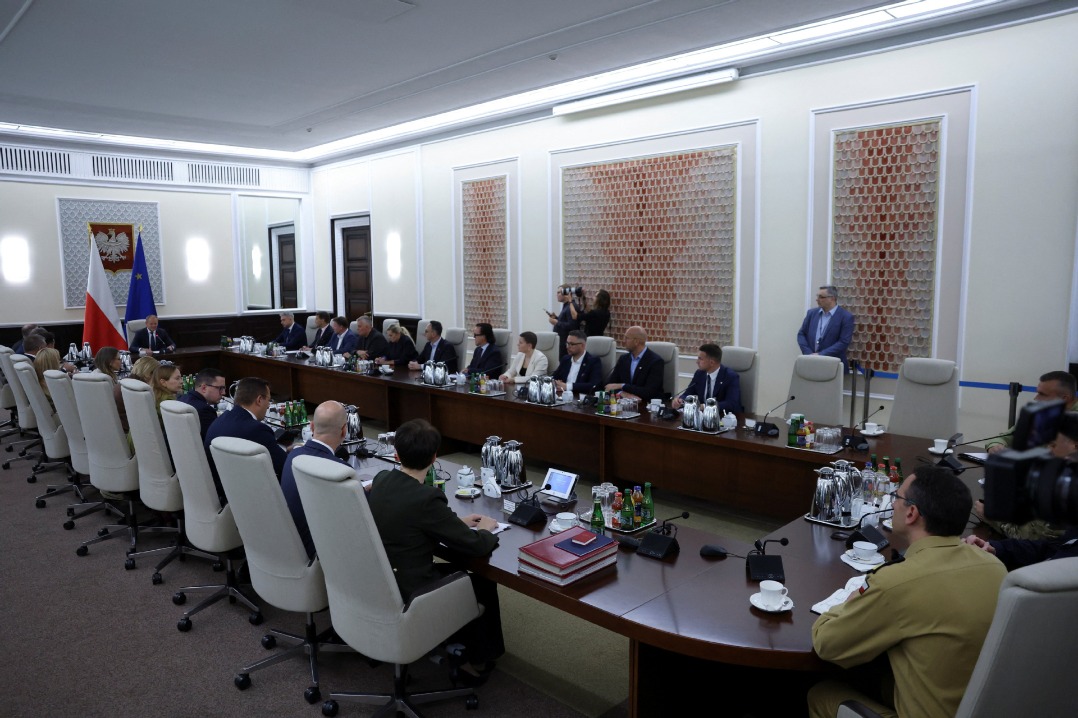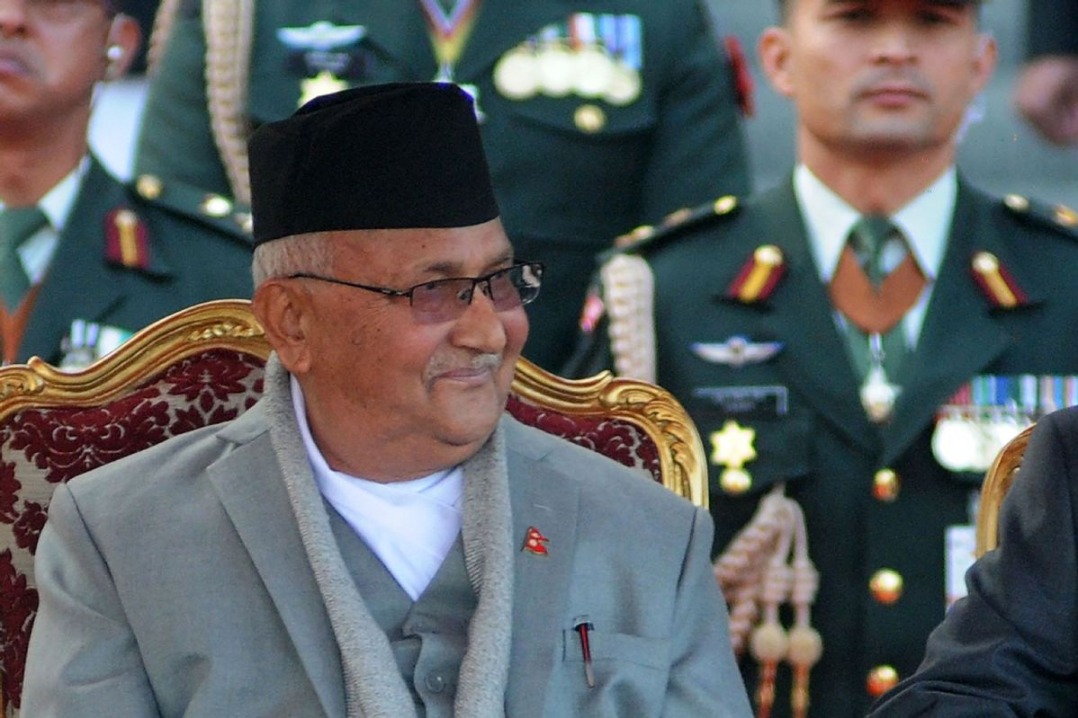ASEAN's vision of peace amid border issue

The ASEAN way of settling the recent border flare-up between Thailand and Cambodia over the Preah Vihear Temple tells of the collective strength of the Association of Southeast Asian Nations. Yet it is also a reminder of how deeply history and identity continue to shape geopolitics in Southeast Asia.
The dispute is not new, but the current episode unfolded in an era that is very different from earlier crises. Today's Asia is marked by deeper economic interdependence, heightened nationalist pressures, rising external competition, and unprecedented opportunities for regional cooperation.
Unlike in the past, when such tensions could be contained through bilateral talks or ASEAN's quiet diplomacy, the present moment requires innovation. It requires not only negotiation, but transformation. With ASEAN's chairmanship in 2025, Malaysia finds itself entrusted with the responsibility to chart such a path.
What makes this moment truly historic is the rare consensus achieved among ASEAN leaders. On Aug 7, Malaysian Home Minister Datuk Seri Saifuddin Nasution Ismail announced that ASEAN had agreed on Malaysia continuing its role as mediator, which had led to its success in settling the flared-up border issue. This unanimity is extraordinary in a grouping where sovereignty concerns often prevent collective action. It signals deep trust in Malaysia's balanced diplomacy and the recognition that conventional formulas are no longer sufficient.
This consensus represents more than a procedural decision. It is a sign that ASEAN has the capacity to act as a coherent actor in regional affairs, reinforcing the centrality of Asian solutions to Asian problems. From China's perspective, a unified ASEAN is not only good for Southeast Asia; it is also essential for China's vision of a community of shared future in Asia.
Malaysia's challenge is to go beyond managing tensions and to reimagine the border not as a dividing line but as a connective tissue. One idea that deserves serious exploration is the creation of a border economic integration zone — a cooperative framework in which contested areas are developed jointly as engines of prosperity.
Imagine renewable energy parks, ecotourism ventures and digital trade hubs springing up along the frontier, governed through shared mechanisms rather than contested ownership. This would flip the logic of the dispute: Instead of competing over who owns the land, the parties could cooperate over how to benefit from it.
But economics alone cannot resolve disputes rooted in history and identity.
The Preah Vihear Temple is not just a piece of land; it is also a symbol of heritage. Malaysia could pioneer what might be called geocultural reconciliation — an approach that reframes heritage sites as shared treasures of civilization rather than objects of national competition. Under this framework, Cambodia and Thailand could co-brand Preah Vihear as a jointly managed UNESCO heritage site, develop coordinated archaeological projects, and launch cross-border cultural tourism.
China's experience in heritage preservation and its emphasis on cultural diplomacy could provide expertise for such initiatives. An even more ambitious, though seemingly unthinkable, idea would be the establishment of an ASEAN-China Cultural Heritage Fund, dedicated to preserving disputed sites by turning them into platforms of cooperation. This would mark a bold step toward transforming culture from a source of rivalry into an instrument of solidarity.
To sustain peace, however, Malaysia must also look beyond the immediate dispute.
One forward-looking measure would be to institutionalize conflict transformation within ASEAN. A permanent ASEAN conflict transformation unit, with headquarters in Kuala Lumpur, could provide early-warning monitoring, mediate emerging disputes and ensure the implementation of agreements. Here, China could help with its advanced technologies — artificial intelligence-driven data analysis, satellite monitoring of border tensions, and digital platforms for preventive diplomacy. Such innovations may sound unthinkable now, but they could become the backbone of an ASEAN that is proactive, not reactive, in handling disputes.
Malaysia also has the opportunity to introduce future thinking into the peace process.
Instead of merely addressing present grievances, ASEAN could convene a future-oriented forum on border peace, at which leaders, scientists and innovators could imagine what the Thai-Cambodian border might look like in 2040.Scenarios could include green energy corridors, AI-managed ecosystems and fully integrated digital economies where borders would no longer hinder movement but enable cooperation instead.
China's leadership in green technology, smart infrastructure and digital connectivity could align seamlessly with this vision. By embedding foresight into diplomacy, Malaysia would shift the negotiation narrative: Compromises made today would no longer be seen as concessions but as investments in a shared and prosperous future.
Still, the greatest challenge remains domestic politics. The leaders of both Thailand and Cambodia face nationalist constituencies that view compromise as weakness.
For this reason, Malaysia's mediation must not only focus on governments but also on shaping public narratives. The emphasis should be that peace delivers tangible benefits: jobs, tourism, modern infrastructure and global prestige. When local populations begin to equate peace with prosperity, nationalist resistance would diminish and political leaders would gain the space to act.
ASEAN's success this time could have profound consequences. It would demonstrate that ASEAN is capable of resolving disputes internally and peacefully, enhancing its voice in global affairs.
For Malaysia, this would confirm its status as a leader in peace diplomacy. For China, it would validate its policy of supporting ASEAN centrality and promoting solutions rooted in Asian wisdom and shared prosperity.
Seen from a wider perspective, the 2025 chairmanship is not just a milestone for Malaysia but a test case for ASEAN and for Asia. If Malaysia can transform the Thai-Cambodian border dispute into a showcase of cooperation, it will mark a turning point in regional diplomacy. It will demonstrate that peace in Asia does not have to follow Western templates of arbitration or coercion, but can instead emerge from Asian traditions of dialogue, harmony and mutual benefit — supported by China's constructive role as partner, investor and cultural ally.
What may seem unthinkable today — jointly managed borders, shared temples, AI-assisted diplomacy and peace tourism corridors — could well become tomorrow's reality.
When Malaysia seizes this opportunity, and with continued support from China, 2025 will be remembered not merely as another year on ASEAN's calendar, but as the year that Southeast Asia proved that Asian solutions, rooted in cooperation and foresight, can transform conflict into lasting peace and prosperity.
The author has a PhD in political science from the Department of Fundamental and Inter-Disciplinary Studies at International Islamic University Malaysia.
The views do not necessarily reflect those of China Daily.

































